This first table shows the Radical 2’s Watts/10 Delta Temp numbers in a quick glance chart format.
Using the data compiled from the Aqua Computer Radical 2 thermal testing I have compiled the following tables in an attempt to show other ways of how its performance varies against itself at the flow rates and fan speeds tested. Effectively these show percentage gains relative to a reference point. It’s an interesting way to show gains/losses while changing a variable.
First let’s focus on 1300 RPM as our reference and see how much gain or loss in performance we get by changing fan speed.
As seen earlier the OptiFlow Push Only 750 rpm result sticks out like a sore thumb.
In the next plot we focus on changing the flow rate with 1.0 GPM as the base line. These percentage changes are higher than usually seen, so we may delve deeper a bit later on.
How about we combine both flow rate and fan speed as reference points and have a look at 0.5 GPM & 750 RPM as the reference point.
Lastly, we change the reference and choose our center 1300 RPM and 1.0 GPM as our reference point to show both effects concurrently:
So from the data above we can get a very good idea of how the Radical 2 radiator performs relative to itself. But there is a large selection of 360mm radiator models to choose from, released from numerous manufacturers. So, we need to start comparing performance between them. To see how the Radical 2 performed against the other radiators tested, I have included the averaged flow rate comparison charts from the Round Up. We know that the flow rate has little impact on thermal performance so averaging of the 3 flow rate results gives us a good look at head to head performance at the rpm speeds tested at with even less error.
Let’s focus on the Push Only results for now and come back to the Push/Pull data later. While for Push/Pull we tested three flow rates, the Push Only testing was conducted only at 1GPM in order to save time.
Let’s start with 750RPM and see how it compares to the competition:
Here the unusual result of Reverse Flow outperforming OptiFlow is what I found most interesting. Compared to the rest of the radiators tested, the Radical 2 results were not sensational, with the “better” Reverse flow result being ~ 12% being the category winner. It did at least beat some radiators that were designed with high airflow in mind.
How does the Radical 2 compare at Push Only 1300 RPM?
At 1300 Push Only the Radical 2 was ~20% behind the winning radiator and is now solidly last. A trait that we can only expect to continue with increasing airflow at 1850 RPM:
The Radical 2 was last again, falling further behind and now ~23% behind the winner.
So the Radical 2 performed terribly in Push Only compared to the competition. Its best results was at the lowest fan speed. So if the trend continues into Push/Pull (with added air flow/pressure) we can be reasonably safe in predicting that the results / comparisons are going to be just as bad if not worse.
Let’s have a look then at the Push/Pull comparisons, again starting with 750 rpm.
Right off the bat then at 750 rpm in Push/Pull the Radical is straight to the bottom of the comparison list ~ 15% behind the category winner. This could get really nasty.
1300 Push/Pull Averaged Results:
In the 1300 rpm category the Radical 2 remains at the bottom of the “leader” board”, now around 27% behind the category winner. It’s becoming clearer that the Radical 2 thermal test results are not very flattering.
Finishing in last place again at 1850RPM, the Radical 2 is now ~ 32% behind the high speed fan category winner.
Its official the Radical 2 is the worst performing radiator of the entire test group. There is no hiding it. Reverse Flow, OptiFlow…it doesn’t matter. This radiator just cannot dissipate the same amount of heat from the coolant as the other radiators.
Shall we also combine the Push and Push/Pull results at the 1.0 GPM flow rate into one plot for each fan speed tested? In the 750 rpm plot below notice how many radiators in Push Only beat the Radical 2’s Push/Pull result – particularly in Reverse Flow:
At the 1300 rpm – well this is getting embarrassing for the Radical 2.
And at 1850 – I don’t even know what to say.
From all of test results we created “Average Performance Factor” charts for both Push and Push/Pull and then a combined plot called the “Master Performance Factor”. The radiator with the best cooling ability (W/10ΔT) at each gpm/rpm combo was awarded a score of 100, and each other radiators W/10ΔT result was scored as percentage of the top performer.
This way of looking at the comparison takes away any advantages that a radiator may have at higher or lower fan speeds and looks at an overall average. While this appears fair it does tend to favor those radiators that are all-rounders and those radiators which do very well at high RPM. Most users should be more focused on their specific use case. Check in the Round Up for performance comparisons at every gpm/rpm combo for even more details and cross comparison results.
Here are the Radical 2’s percentage scores at each data point that thermal tests were conducted at:
All those low numbers and red boxes confirm what was shown previously, that the Radical 2 is not capable of competing in the heat dissipation department. The 750rpm percentage numbers do appear better (slightly), but it must be remembered that all the numbers are low in this category, so the percentage numbers will be much closer also.
Then we started averaging the percentage scores at each flow rate giving us the Averaged Performance Factors of each radiator.
Firstly – the Push Only APF:
No surprises that The Radical 2 has the lowest APF score in Push Only given the results we have seen previously.
Now the Push/Pull APF:
Again a last place, with a Reverse Flow score so low that the percentage scale had to be adjusted down to 70% where previously it was 75%.
Finally we created the Master Performance Factor which is calculated from the averaged results of all the thermal tests, Push and Push/Pull at all flow rates and all fan speeds.
The Radical 2’s MPF results were the worst of the test group – no surprises there given that it was last at nearly every data point that we tested at. It has been shown that that the Radical 2 is a very poor performer and at some stage we have to start pointing towards possible reasons for it.
As with the Radical 2’s stable mate the AMS 360 which we also tested, I believe that the large round tubes and relatively flat fins are the main reasons behind the Radical 2’s poor thermal performance (relative to the competition). While I am unable to provide evidence, I believe that the parallel round tube flow path may be the primary reason for the poor performance. With the flow rate being split between 7 tubes it could be that the flow in each tube has dropped into a laminar flow, significantly reducing potential performance. Despite the additional FPI of the Radical over it’s AMS stable mate the thinner and narrower core seemed to hurt it more at every single test point.
Whatever the reasons, the thermal performance results are disappointing to say the least.
Next up – Summary!








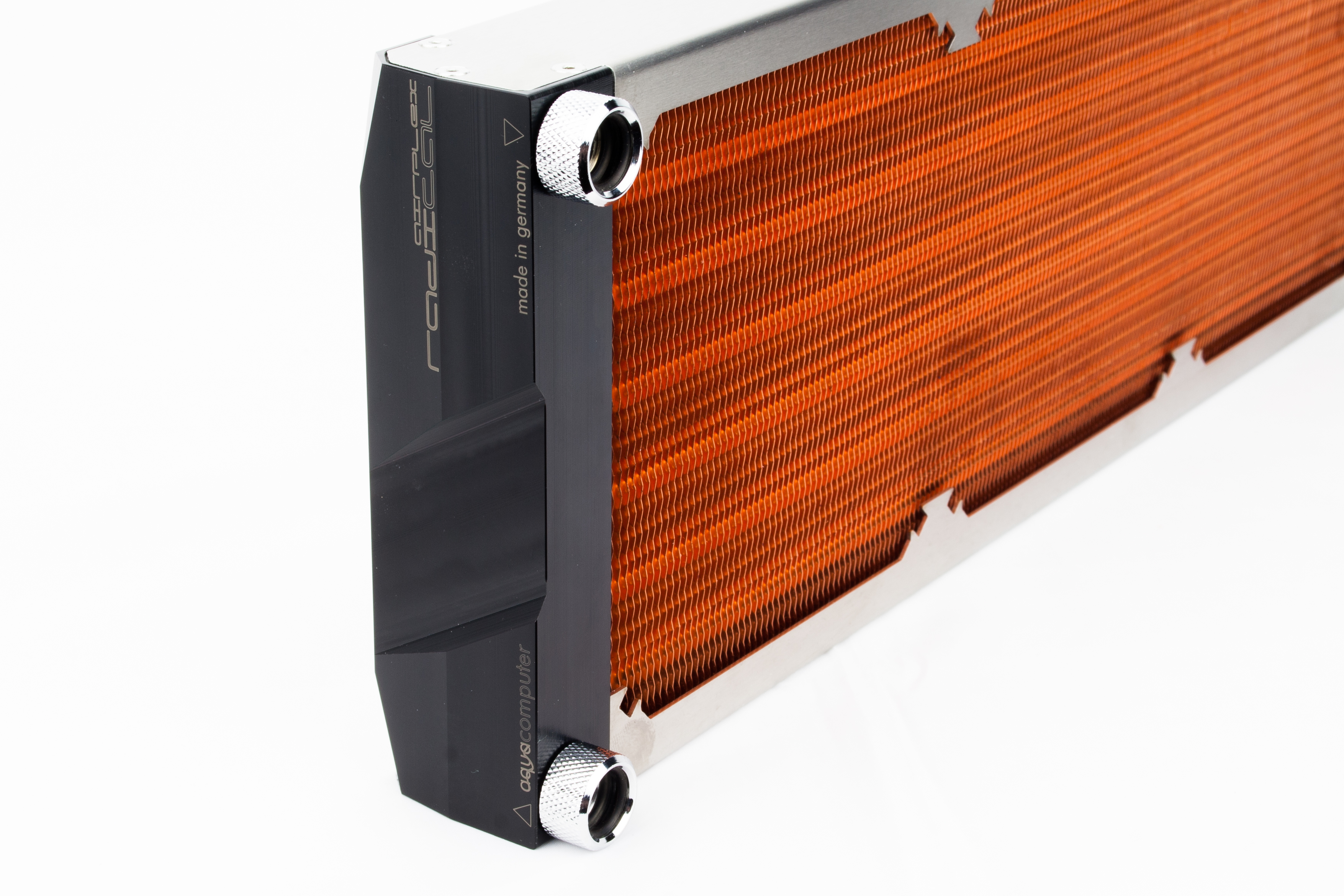






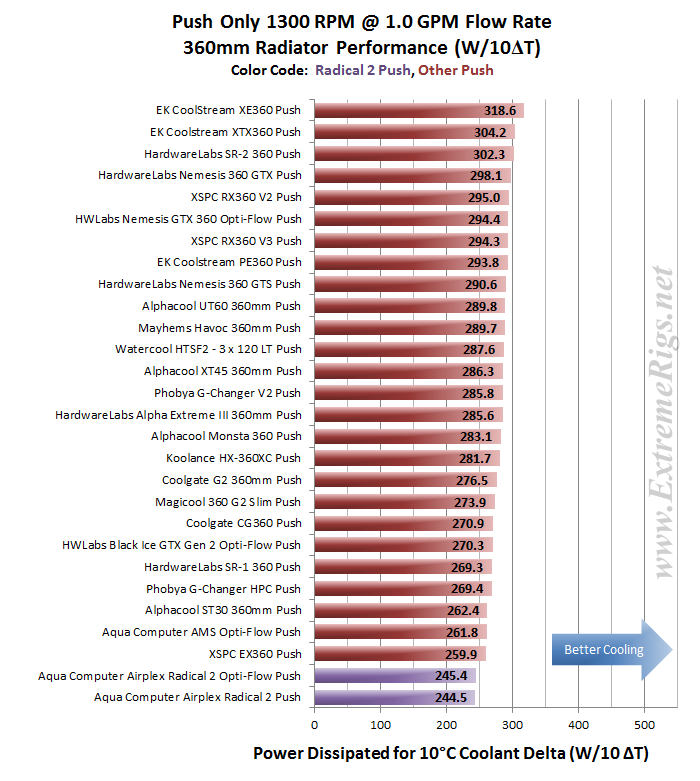
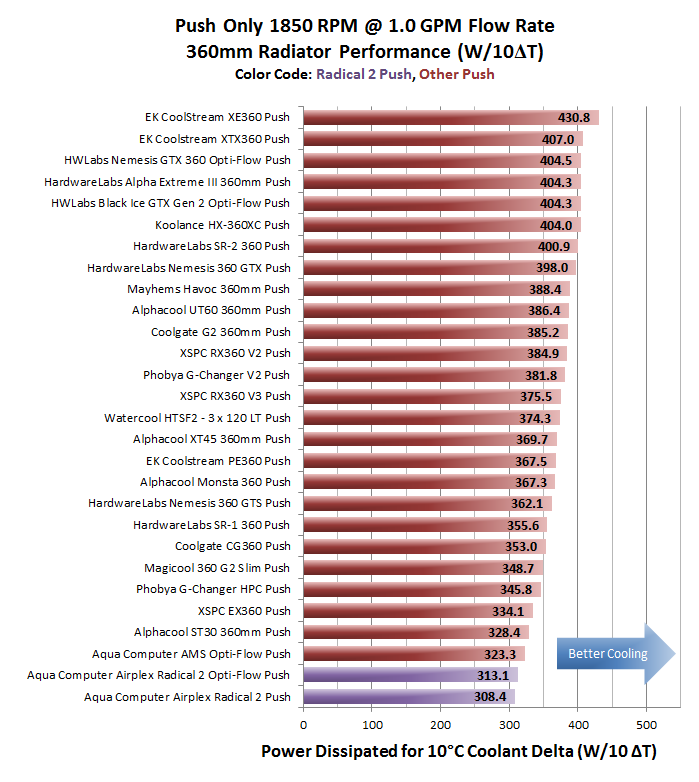
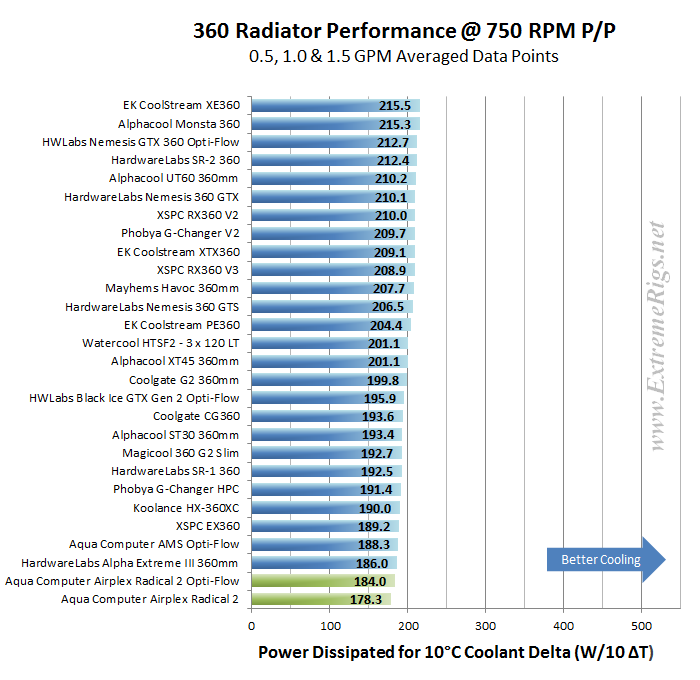
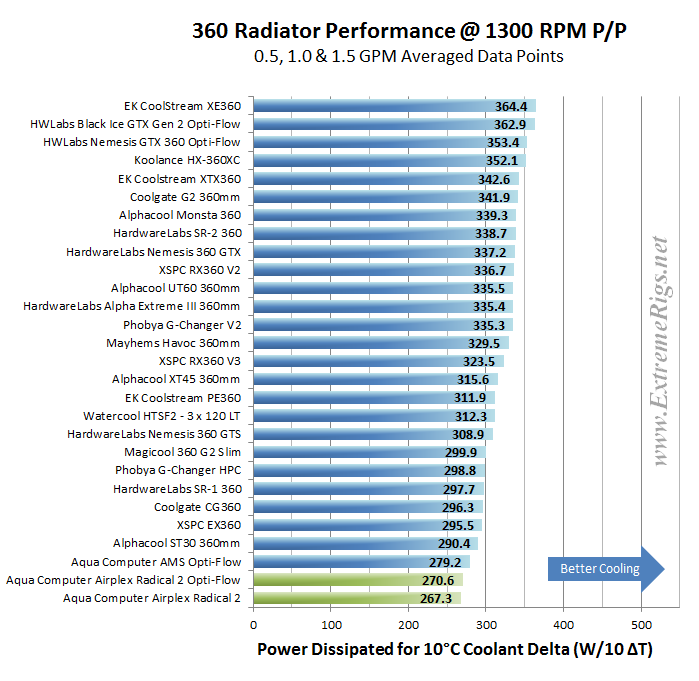
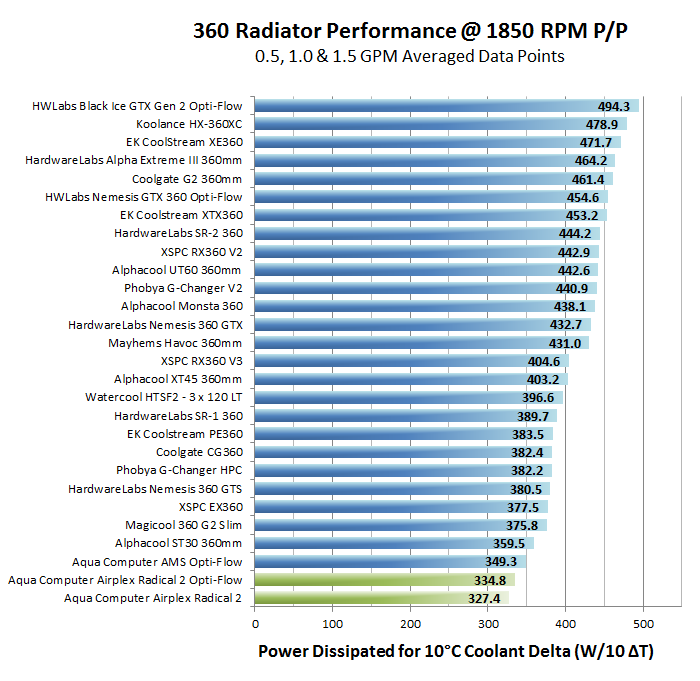
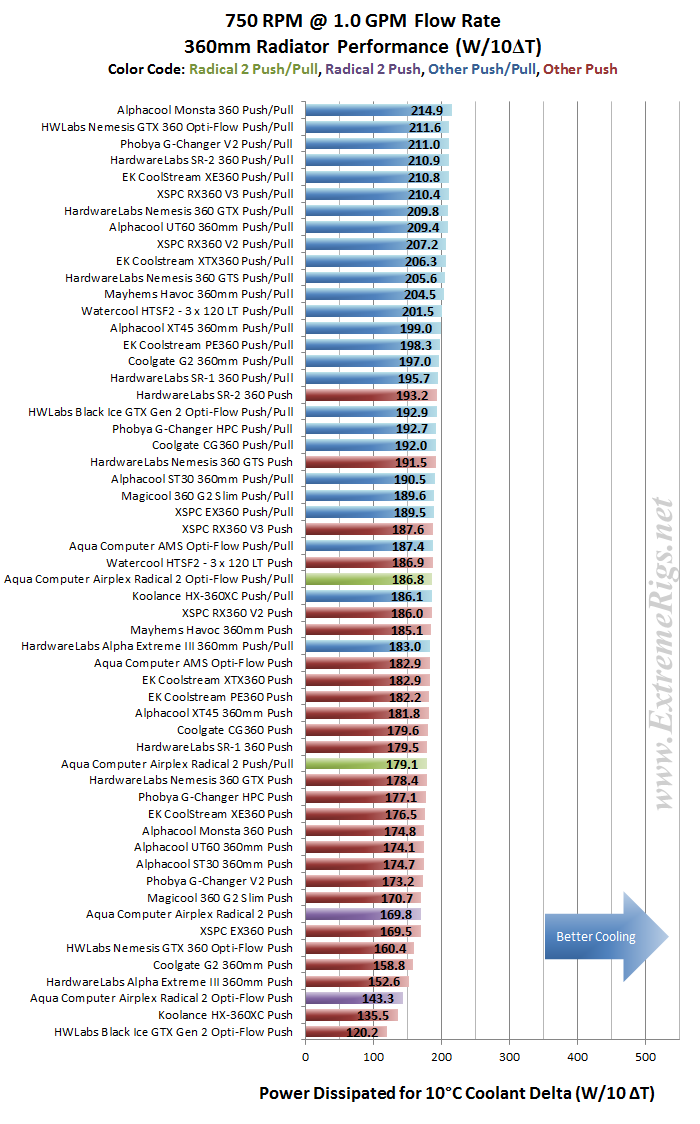
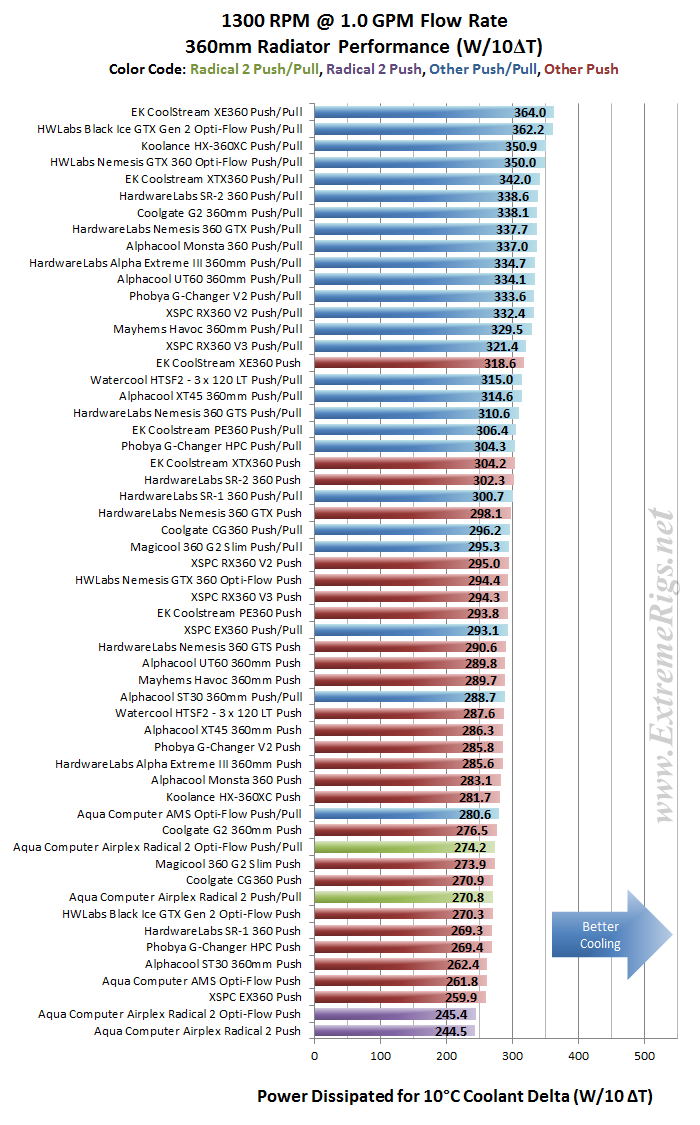
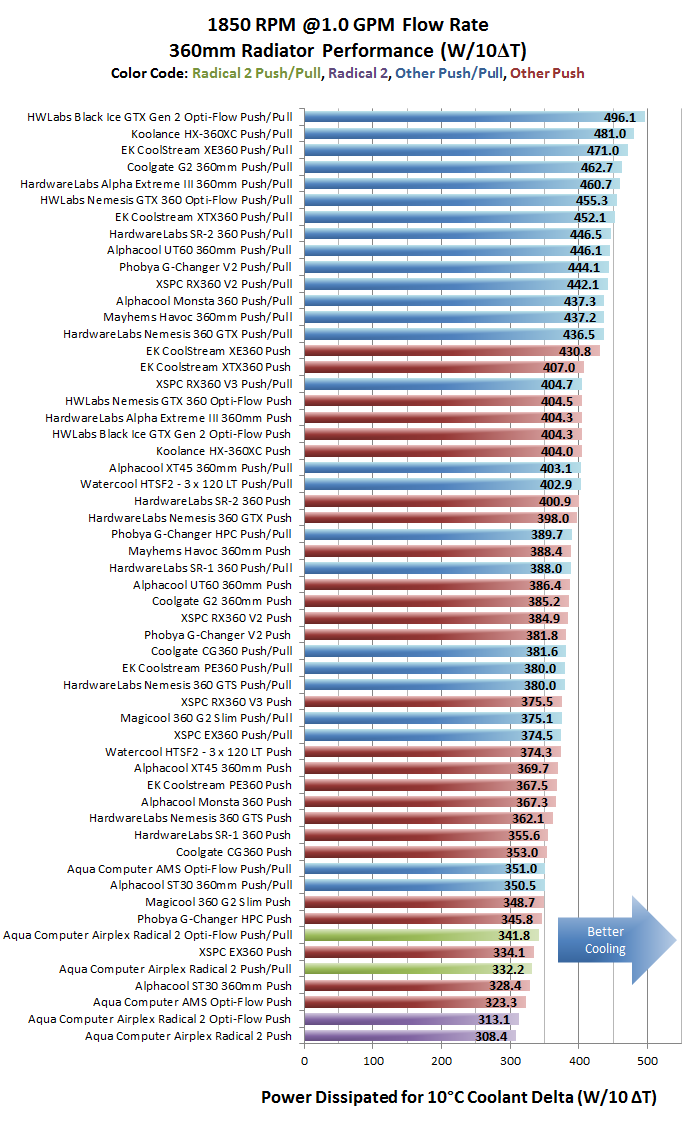

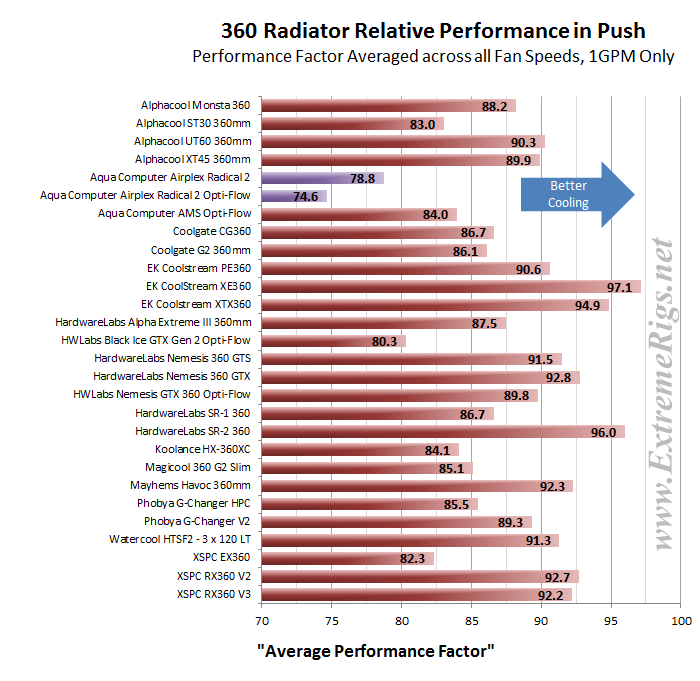
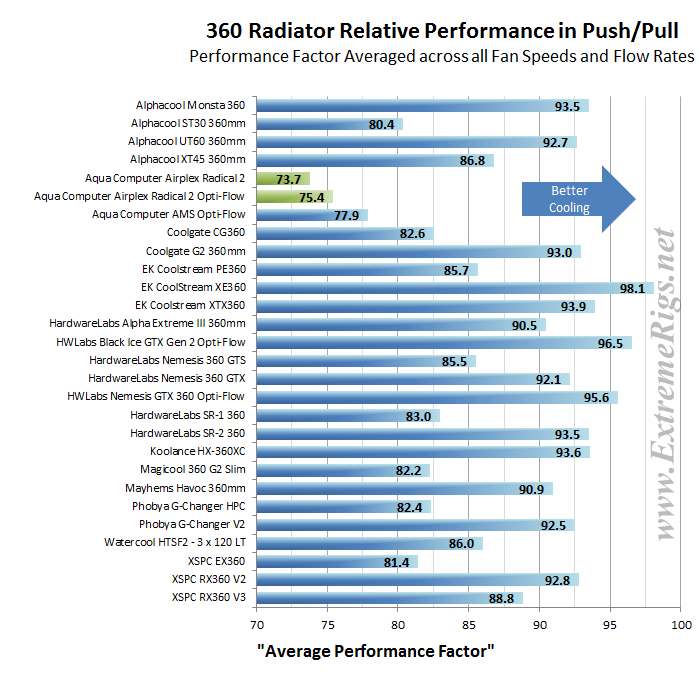
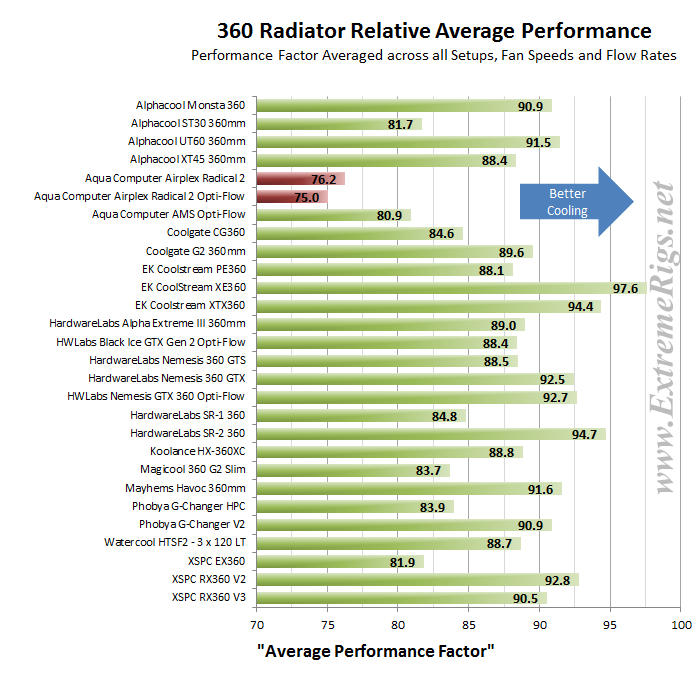



[…] 360 Radiator Alphacool ST30 360 Radiator Alphacool UT60 360 Radiator Alphacool XT45 360 Radiator AquaComputer Airplex Radical Copper 360 Radiator AquaComputer AMS 360 Radiator Coolgate CG 360 Radiator Coolgate G2 360 Radiator EK SE 360 Radiator […]
[…] just cannot dissipate the same amount of heat from the coolant as the other radiators. Quelle: Aqua Computer Airplex Radical 2 Copper Radiator Review – Page 5 of 6 – ExtremeRigs.net -> radikal schlecht Zitat von known user wenn die Masse NV anprangert, krieg ich […]
[…] […]
I have to say i fully agree with you on the mounting solution – it is utterly terrible. It took me and my brother working together to get this to fit in the top of my case (admittedly, it was a tight squeeze which doesn’t help). The fact that it doesn’t come with a full set of the fittings, means mine is supported by 4 on the top, and the other 8 holding fans on the bottom of the rad.
That aside, the cooling performance of this rad seems to be excellent for me – i have a d5 vario pump (usually running at 1000rpm), fx-8350 with EK waterblock, and this rad (3 x corsair sp120 + 2 x 200mm NZXT case fans. My temperatures are on average, below ambient. While on load, they peak at 35C. When overclocked, i have struggled to get it to go higher than 43C. Although this review suggests that other rads would lower these temps further.
Comments are closed.